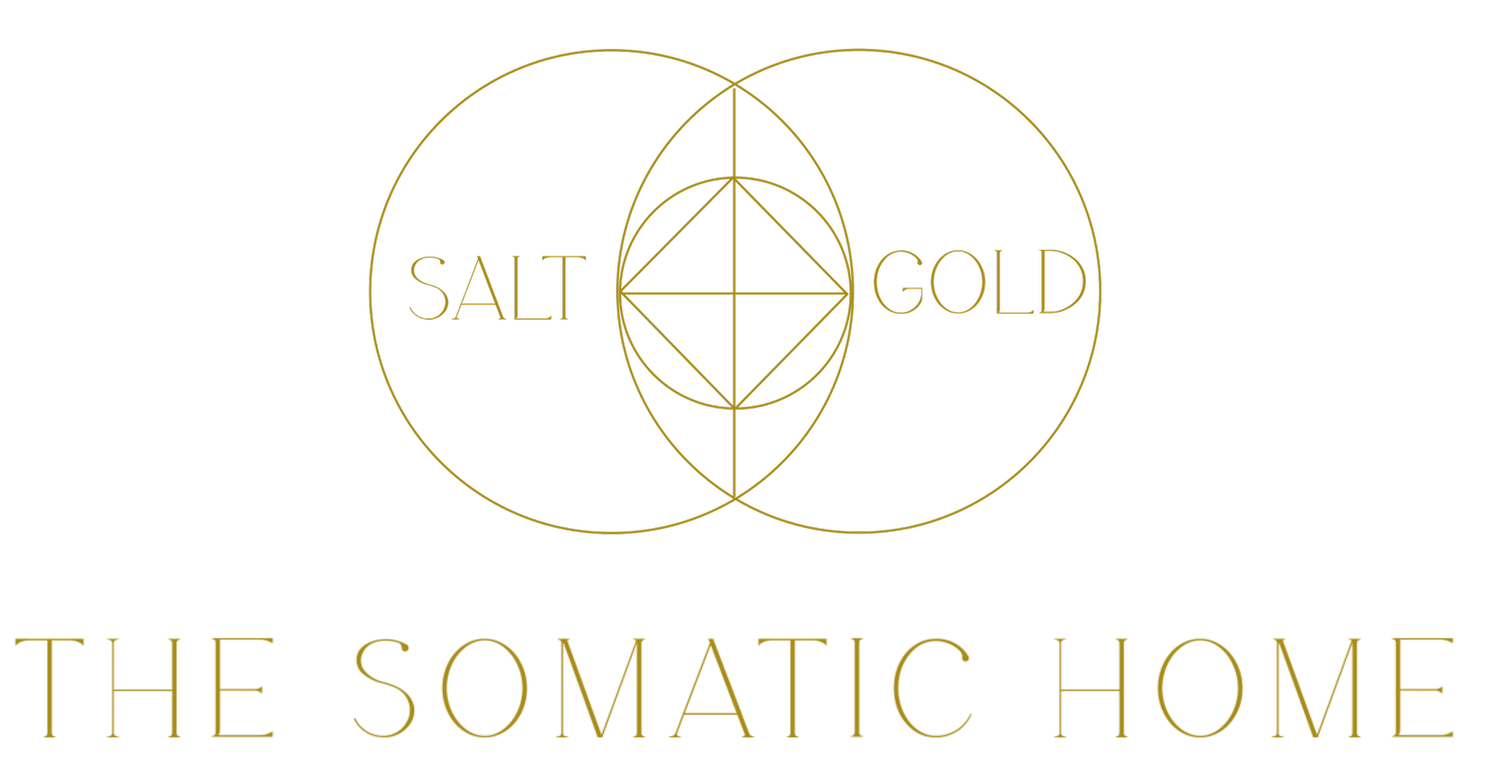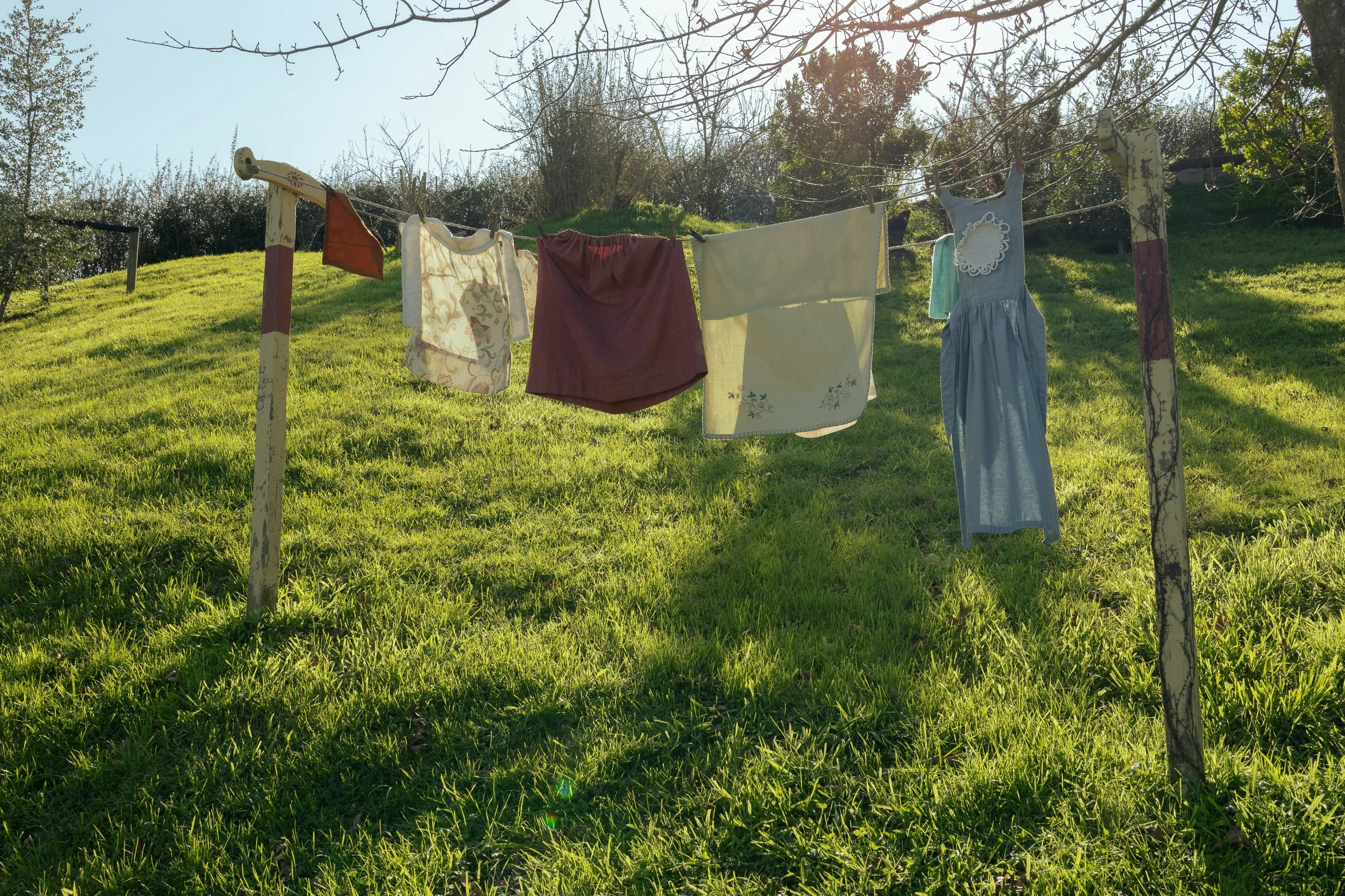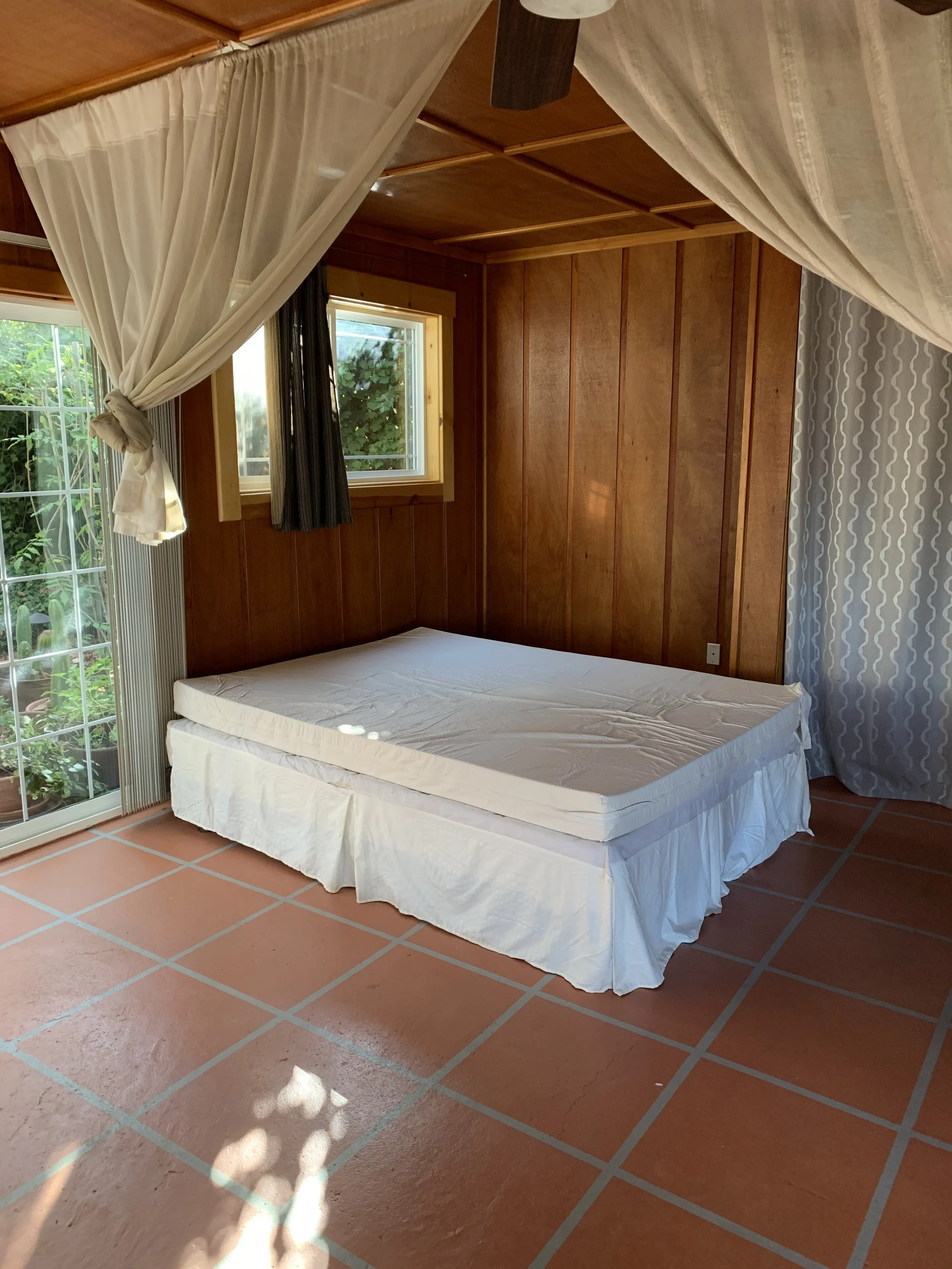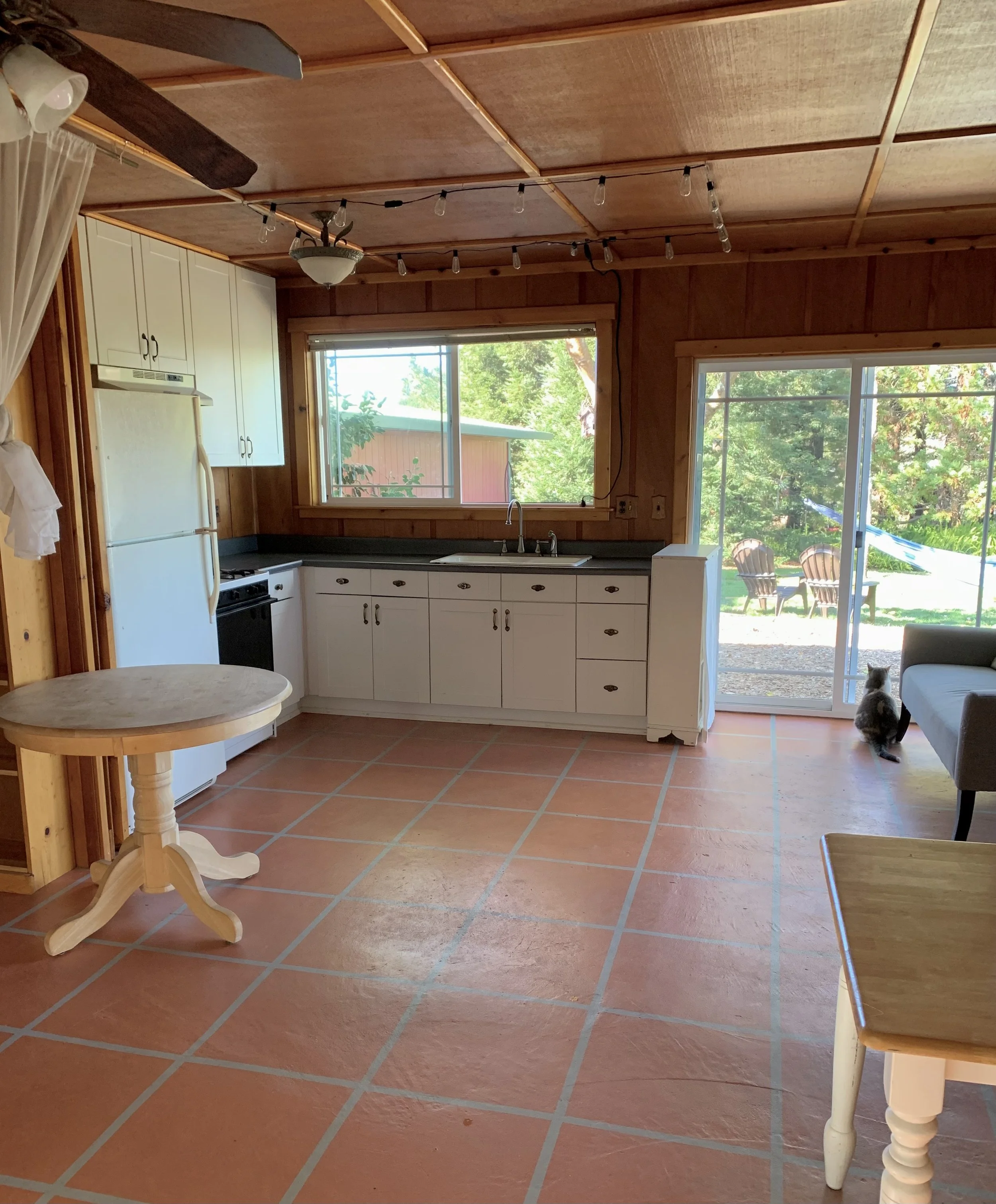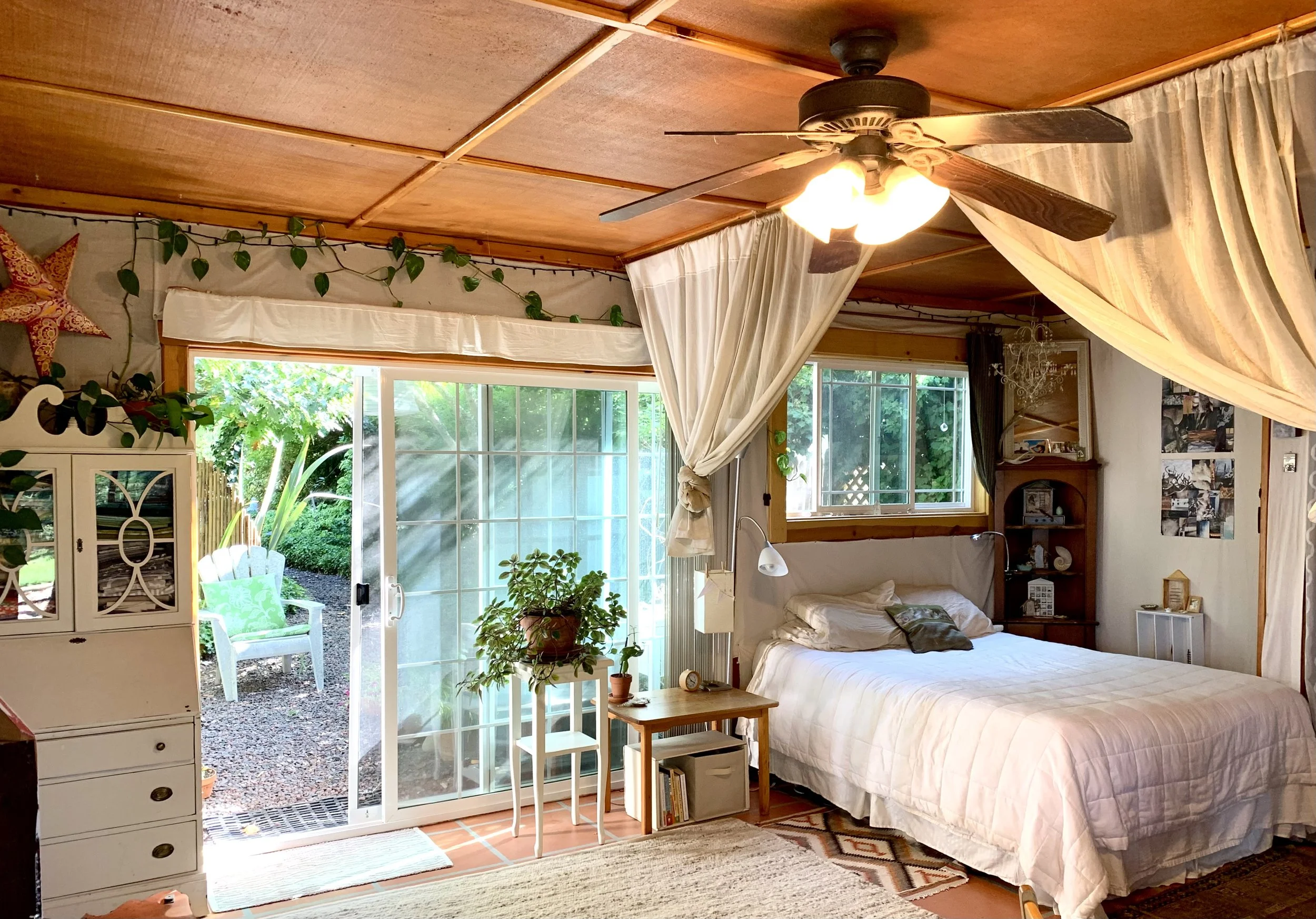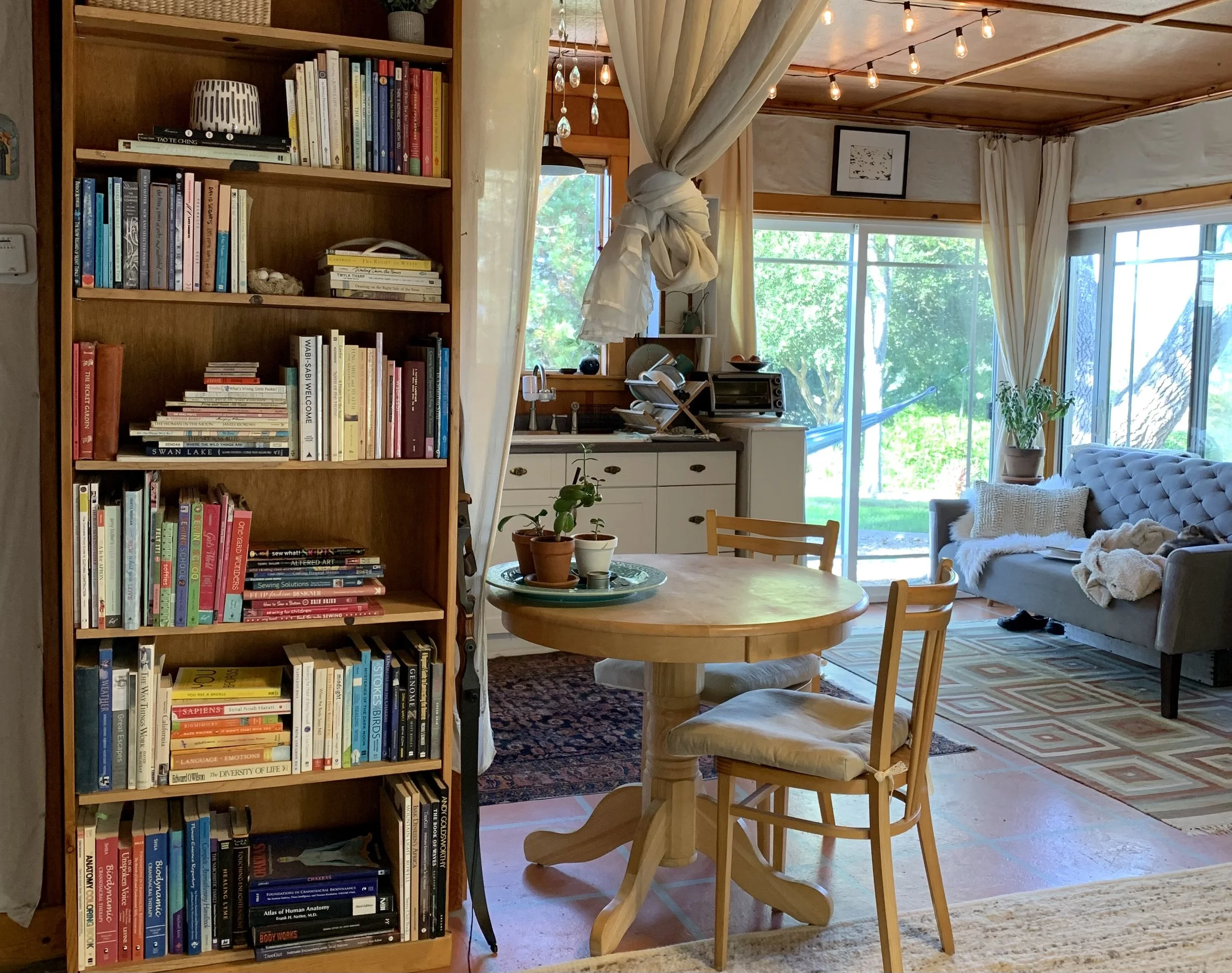Home Is the External Nervous System
By Nicteha Cohen
My nervous system was a frazzled ball of sparking wires by the time I ever heard the term nervous system regulation. A childhood of extreme difficulty, years of chronic illness, and desperate searching for how to feel better—even just okay—had left my system in chaos.
I’d studied interior design and feng shui before I was struck with Lyme disease, and I was on the path to a master’s degree in Architecture before the fates twisted. Somewhere in those early years of being bedridden with an illness most people didn’t believe was real—but from which I was often unable to walk or even lift my head from the pillow—I learned about the nervous system. In 2007, when I first got sick, “regulating your nervous system” was not something commonly heard in the mainstream.
Now it’s everywhere—you’ve probably come across it: a promise of calm in a chaotic world, a way to “hack” your system. I’m not here to disagree. The emerging research and effectiveness of true nervous system rewiring is crucial. But there’s a missing piece to the puzzle:
The environments in which we spend our lives shape the functioning of our internal world and are a vital component for building lasting nervous system resilience.
Home as Nervous System
After years of being mostly bedridden, I eventually came to Craniosacral Therapy as a potent modality to unravel some of the entangled and cemented patterns in my own nervous system.
I was receiving a session during my practitioner training—my mind meandering in a liminal space, something tapping at the outskirts of an epiphany. The room we were studying in was cold, echoing, and poorly lit—its atmosphere made me cringe every time I entered. I knew there was a bridge between nervous system health and my lifelong love of architectural design and beauty—and I could feel how this space was keeping me from fully relaxing.
Then, like lightning through the fog, it landed:
The spaces we inhabit are the external nervous system. Our biology responds to space.
Why is no one talking about this?
It turns out people have been talking about it—it’s just been slow to reach the cultural foreground.
The Science of Space
Environmental psychology, neuroarchitecture, and trauma research are making it increasingly clear: the spaces we inhabit have a profound effect on our physiology, psychology, and overall well-being.
The human nervous system is exquisitely attuned to its surroundings. Through a process called neuroception—a term coined by Dr. Stephen Porges, inventor of the Polyvagal theory—we continuously scan our surroundings for cues of safety or threat, without conscious awareness. This process is ancient, involuntary, and constant.
We spend more time in our homes than anywhere else, yet we often overlook how profoundly they affect us. The design, layout, and objects in our space impact us—whether we realize it or not. Our home has the potential to give us a sense of ground and safety, or contribute to feelings of disconnection and overstimulation. The act of working with the home to provide the appropriate signals to your internal architecture can help you “relearn” what safety feels like. Your home then becomes a supportive, external nervous system—helping to build resilience and capacity.
For those of us with tender inner wiring—empathic, neurodivergent, or carrying unresolved trauma—this kind of external support is especially relevant. Dr. Bessel van der Kolk, a leading voice in trauma research, teaches that trauma resolution depends on creating predictable rhythms and sensory cues of safety-
not just within our bodies, but in our surroundings.
When you consistently experience safety and life-force within your home, new neural pathways start to form. This doesn’t mean trauma disappears, but rather that the body and mind can begin to differentiate between past danger and present safety, helping you to respond more appropriately. The brain has the capacity to reorganize itself in response to experience. This is called neuroplasticity.
A consciously tended home actually begins to rewire your brain.
Not Just About Calm—About Capacity
All humans experience some degree of trauma—impacts from the wildness of life. When trauma occurs—physical, emotional, or psychological—it can interrupt the smooth communication of the body and brain. This can make it hard to return to a sense of neutrality after a re-activating event. We may feel, or be told, we’re overreacting or too sensitive, when in truth, it’s not our personality that’s at fault, but a misfiring biology at the core of our being.
If you haven’t yet dipped into the basics of the nervous system, here’s the nutshell (it’s much more nuanced than this). The autonomic nervous system moves between two branches—the sympathetic (fight or flight) and the parasympathetic (rest and digest). For those who’ve lived through trauma, particularly chronic or complex trauma, this system can get stuck in high alert, unable to downshift—even when life is quiet.
A disorganized nervous system is at the root of many of today's common struggles. "Regulation” has become a buzzword that is often oversimplified—framed as quick fixes or trends. But true regulation is a deep, biological process, not a hack or a mood.
One of the biggest misconceptions about nervous system regulation is that it means staying calm all the time. But a well-regulated system still feels anger, fear, fatigue, and activation—it just doesn’t get stuck there. True regulation means your biology knows how to move through intensity and still stay tethered to your roots, without bracing or shutting down.
This isn’t something that happens overnight. It is built- slow and steady—with consistency, practice, and commitment.
Co-Regulating with Home
In the world of somatics and trauma-informed care, we often talk about the importance of a “safe other”—a person whose presence helps calm and regulate the nervous system.
But for many of us, other people don’t always (or ever) feel safe. This is more common than we tend to admit—especially for those who grew up without consistent, attuned care, or who have experienced relational harm. When intimacy has been paired with overwhelm, the body doesn’t easily relax in relationship.
This is where home can become the “safe other.”
When you engage your home as a relational field—something alive, something you're in dialogue with—it can become a steady companion that offers true solace.
You wash the dishes. You light a candle. You touch the plant.
These aren’t just tasks. They’re quiet, physical ways of signaling safety to your system. They’re gestures of co-regulation.
This is how to begin to re-map safety; to help the body remember what it feels like to settle and soften.
The Slow Return Home
I spent a decade mostly homebound with illness in a 400 square foot studio.
It was a crucible and a cauldron- and the realm in which I applied my theories. Many days I could do nothing, but when I could, I would play with my space. Some days it was moving the pile of beach rocks around on the table until they formed shapes that pleased me. On others, it was arranging my bookshelf and adding treasures I’d collected from my traveling days. Bit by bit I covered the dark walls with white cotton sheets to bring brightness and softness. Every surface was an altar.
Before
I found ways to carve out nooks for each activity, ways to display and ways to contain. It was a slow snail-like creation. But the process itself gave me joy where I had little, and the result softened the hard edges of my life circumstances. And everyone who came over commented on how good they felt when they crossed the threshold, how peaceful, how bright, how inspired. My space was no pinterest board, but it was a reflection of me, of my style, my beauty way. I spent almost no money to make the changes, just a lot of time in one place and a trail of insight and inspiration to follow.
So, did my home “heal” me? That question requires a deeper exploration of what we mean by healing—a subject for a future post. I continue to manage my health, and I have the full range of human feelings and difficulties, but relating to my home is the foundation for all the other facets of caring for myself and my relationships. And truly, it’s the most rewarding and fun tool I have in my basket.
That time of acute sickness cemented my understanding: our home influences our life in vast ways. True nervous system regulation requires environmental support—a space that helps hold the new patterns as they take root. Without that container, even the most devoted inner work can lose momentum.
If you want to balance the complex, interwoven systems of your body and psyche—you need steady somatic practice within a steady, fortified, and beautiful (according to you)- space.
Your dwelling is the forgotten tool. The safe other, the living vessel in which the remembering of your wholeness gains traction. This is the ground from where our embrace for all of life's experience widens and our capacity to experience the full spectrum of ourselves is ignited.
